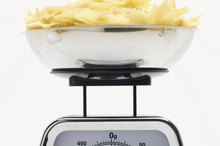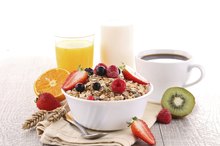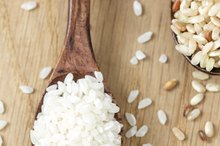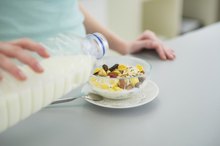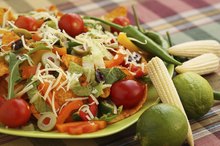What does fact checked mean?
At Healthfully, we strive to deliver objective content that is accurate and up-to-date. Our team periodically reviews articles in order to ensure content quality. The sources cited below consist of evidence from peer-reviewed journals, prominent medical organizations, academic associations, and government data.
The information contained on this site is for informational purposes only, and should not be used as a substitute for the advice of a professional health care provider. Please check with the appropriate physician regarding health questions and concerns. Although we strive to deliver accurate and up-to-date information, no guarantee to that effect is made.
The American Diabetes Association and the Academy of Nutrition and Dietetics developed a diet plan based on exchange lists for people with diabetes 4. Even though these diets have been mostly phased out, some people still follow them. The diabetic exchange lists divide foods into six groups 1. For a plan that supplies 2,000 calories per day, you would eat the following number of exchanges from each group: nine starches, seven meats, four fruits, four vegetables, three milks and four fats. Within each group, you may exchange different foods for one another. The diet consists of approximately 50 percent carbohydrates, 30 percent fat and 20 percent protein. Consult your doctor or a dietitian if you're having trouble developing a balanced diabetes diet.
Choose a Variety of Foods at Breakfast
A typical 2,000-calorie ADA diet plan using the exchange list method allows diabetics to have two starches and one serving each from the milk, fruits and lean meat categories 123. A slice of whole-wheat toast spread with 1 tablespoon of peanut butter, a small piece of fresh fruit and a 3/4-cup serving of breakfast cereal with 1 cup of nonfat milk would fulfill these requirements. When choosing a cereal, look for unsweetened brands that are high in fiber.
Pile on the Vegetables at Lunch
List of 100-Calorie Food Portions
Learn More
Lunch on an ADA diet plan might consist of 1 cup of raw salad greens topped with 1 cup of chopped fresh vegetables, such as tomatoes and cucumbers; 2 ounces of grilled poultry; and 2 tablespoons of a low-fat vinaigrette. A 6-inch whole-wheat pita, a small piece of fruit and a glass of milk would round out the meal. This lunch provides two servings each of starches, lean meats, fats and vegetables and one serving from the milk and fruit categories.
Pick Lean Protein at Dinner
A sample dinner could include four lean meat servings, three starches, two vegetables and fats, and one fruit. Try 4 ounces of baked or grilled salmon, 1 cup of steamed or sauteed mixed vegetables, 1 cup of cooked brown rice and 1 1/4 cup of sliced strawberries. Use a small amount of mono- or polyunsaturated oils like olive, canola, safflower or sunflower oil instead of butter or lard when cooking. Incorporate at least two 3.5-ounce servings of fish rich in omega-3 fatty acids into your meals weekly, especially as a substitute for beef or pork.
- A sample dinner could include four lean meat servings, three starches, two vegetables and fats, and one fruit.
- Use a small amount of mono- or polyunsaturated oils like olive, canola, safflower or sunflower oil instead of butter or lard when cooking.
Work in Starches at Snacktime
1,200-Calorie Exchange Diet
Learn More
Starches, paired with either a fruit or dairy, are recommended components of your morning and afternoon snacks on the ADA's diabetic exchange plan 1. You could snack on 6 ounces of yogurt along with three graham cracker squares for one starch and one milk or 1 ounce of whole wheat crackers and a small orange for one starch and one fruit.
Related Articles
References
- Glycemic.com: The Diabetic Exchange List (Exchange Diet)
- Beliefnet: 2,000-Calorie Diabetic Diet
- Novo Nordisk: Your 2,000 Calorie Meal Plan
- American Heart Association: Fish 101
- Wheeler M, Daly A, Evert A et al. Choose your foods: exchange lists for diabetes, sixth edition, 2008: description and guidelines for use. J Am Diet Assoc. 2008;108(5):883-888. doi:10.1016/j.jada.2008.02.002
- University of California, San Francisco. Diabetes Education Online. Carbohydrate exchanges.
Writer Bio
Michelle Kerns writes for a variety of print and online publications and specializes in literature and science topics. She has served as a book columnist since 2008 and is a member of the National Book Critics Circle. Kerns studied English literature and neurology at UC Davis.

